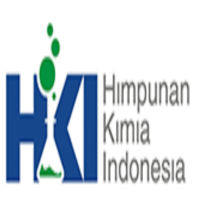ANALISIS KANDUNGAN KAFEIN PADA KOPI SEDUHAN WARUNG KOPI DI KOTA BANDA ACEH
Abstract
Coffee is the most popular beverage in the world after water and tea. In Acehnese society, the tradition of drinking coffee is passed down from generation to generation and has evolved into Aceh's unique cultural tradition, especially in Banda Aceh. However, behind its delicious taste, coffee drinkers need to be aware of the content of caffeine in coffee. According to SNI 01-752-2006, the limitation of caffeine consumption is 150 mg/day. The aim of the study is to measure the caffeine contents in gayo coffee and sareng coffee which brewed from coffee shops in Banda Aceh. This research was conducted at Akafarma Laboratory-Banda Aceh and at Research Laboratory Department of Chemistry FMIPA Unsyiah by using UV Vis spectrophotometry. The population in this study were Gayo coffee and Sareng coffee brewed in coffee shops in Banda Aceh, whereas samples were taken by purposive sampling from coffee shops with the number of visitors above 200 people/day. The results showed that from ten samples of Gayo coffee that tested, two samples did not meet the SNI set requirements, namely samples 2 and 4, with the levels of each sample in one serving consecutively are 126.9 mg; 197.1 mg; 134.3 mg; 174.6 mg; 109.2 mg; 51 mg; 119.5 mg; 88.8 mg; 108.6 mg and 141.7 mg. On the contrary, in Sareng coffee, from the tests that conducted on 10 samples, the results showed that all of the samples meet SNI requirements, with the content of each sample in one serving consecutively is to 124.7 mg; 64.4 mg; 131.9 mg; 138.3 mg; 103.9 mg; 110.1 mg; 35.3 mg; 117.5 mg; 125.7 mg and 36.2 mg.
Keywords
Full Text:
PDFReferences
Aditya, I. (2015). Kajian Kandungan Kafein Kopi Bubuk, Nilai pH dan Karakteristik Aroma dan Rasa Seduhan Kopi Jantan (pea berry coffe) dan Betina (flat beans coffe) Jenis Arabika dan Robusta. Skripsi. Bali: Universitas Udayana.
Aprilia, F. A., Ayuliansari, Y.P, T. Azis, M. Camelina, W., dan Putra, M. (2018). Analisis Kandungan Kafein dalam Kopi Tradisional Gayo dan Kopi Lombok Menggunakan HPLC dan Spektrofotometri UV-Vis. Biotika. 16 (2) : 38-39.
Arwangga, F. A., Lara. Sudiarta, I. (2016.) Analisis Kandungan Kafein pada Kopi di Desa Sesaot Narmada Menggunakan Spektrofotomertri Uv- Vis. Jurnal Kimia, 10 (1): 110-114.
Cornelis, C. M. (2019). The Impact of Caffeine and Coffee on Human Health. Nutrients Journal, 11, 416.
Crismaaji, Y. D. (2018). Penetapan Kadar Kafein dalam Kopi Bubuk Murni Robusta merek “X” dengan Metode Hight Performance Liquid Chromatografi (HPLC) Fase Terbalik. Skripsi. Yogyakarta : Universitas Sanata Dharma.
Erdiansyah, N.P., dan Yusianto. (2012). Hubungan Intensitas Cahaya di Kebun Dengan Profil Cita Rasa dan Kadar Kafein Beberapa Klon Kopi Robusta. Jurnal Pelita Perkebunan. 28, 14-22.
Fatoni, A. (2015). Analisa Secara Kualitatif dan Kuantitatif Kadar Kafein Dalam Kopi Bubuk Lokal Yang Beredar Di Kota Palembang Menggunakan Spektrofotometer UV-Vis. Laporan Penelitian. Palembang: Sekolah Tinggi Ilmu Farmasi Bakti Pertiwi.
Farmakologi UI. (2002). Farmakologi dan Terapi Edisi 4. Jakarta: Gaya Baru.
Helmi, IS. Dan Gumulya, D. (2018). Kajian Budaya Minum Kopi Indonesia. Jurnal Dimensi. 2 (13) : 171-175.
Kurnia, A. S. (2018). Pengaruh Waktu dan Suhu Roasting Terhadap Mutu Kopi Varietas Arabika. Diakses dari http://www.repository.unpas.ac.id pada Tanggal 21 Juli 2019.
Maramis, R. Citraningtyas, G. Wehantouw, F. (2013). Analisis Kafein dalam Kopi Bubuk di Kota Manado Menggunakan Spektrofotometri Uv-Vis. Jurnal Ilmiah Farmasi. 2 (4): 122-128.
Nazar, M. dan Mustofa, A. D. (2014). Isolasi dan Identifikasi Kadar Kafein Beberapa Varietas Kopi Arabika (Coffea Arabica) yang Tumbuh di Aceh Tengah. Prosiding Seminar Nasional. Banda Aceh : Universitas Syiah Kuala.
Özpalas, B. dan Özer, E. A. (2017). Effects of Caffeine on Human Health. Nevşehir Billim ve Teknoloji Dergisi Cilt, 6: 297-305.
Putri, D.D. dan Ulfin, I. (2015). Pengaruh Suhu dan Waktu Ekstraksi terhadap Kadar Kafein dalam Teh Hitam. Jurnal Sains dan Seni ITS, 4(2): 105-108.
Purwanto, D. A. (2018). Pengaruh Suhu dan Jumlah Penyeduhan Terhadap kadar Kafein Terlarut dengan Metode KCKT. Diaksess dari http://www.e-journal.unair.id pada Tanggal 21 Juli 2019.
Sari, S. A. (2019). Kimia Pemisahan. Tangerang: Tsmart Printing.
Standar Nasional Indonesia. (2006). Bahan tambahan Pangan-Persyaratan Perisa dan Penggunaan dalam Produk Pangan. SNI 01-7152-2006.
Soraya, N. (2008). Isolasi Kafein Dari Limbah Teh Hitam CTC Jenis Powder Secara Ekstraksi. Skripsi. Bogor: Institut Tertanian Bogor.
Suryani, N., Yupizer dan Sasmita, E. (2016). Kadar Kafein pada Kopi Kemasan dan Uji Organoleptis Terhadap Aroma dan Rasa. Jurnal Science Pharmacy, 2(2): 9-14.
Wachamo, H. L. (2017). Review on Health Benefit and Risk of Caffeine Consumption. Medical & Aromatic Plants Journal, 11:416.
Wilson, C. (2018). The Clinical Toxicology of Caffeine: A Review and Case Study. Elsivier (Toxicology Reports), 5: 1140-1152.
DOI: http://dx.doi.org/10.22373/lj.v8i1.5759
Refbacks
- There are currently no refbacks.
Copyright (c) 2020 Elfa Riyanti

This work is licensed under a Creative Commons Attribution 4.0 International License.
INDEXED IN

